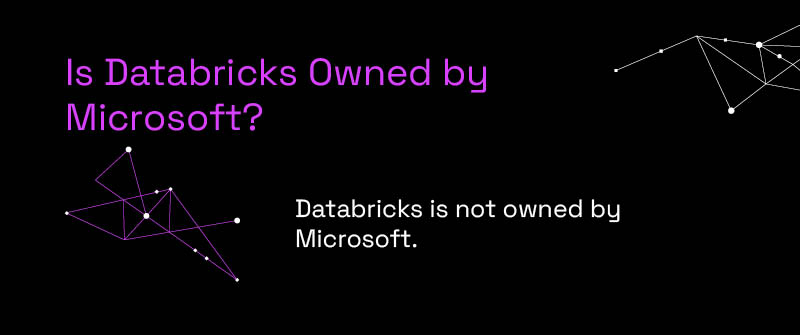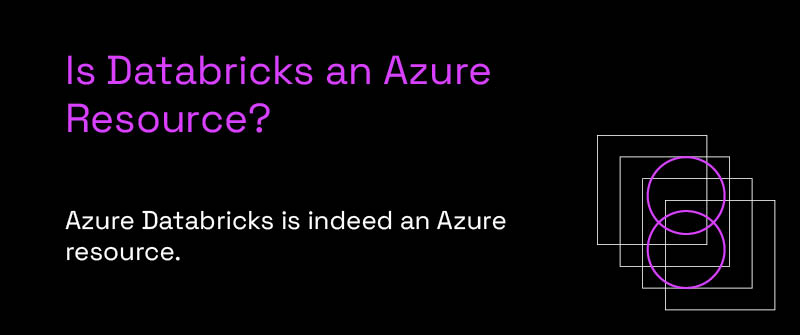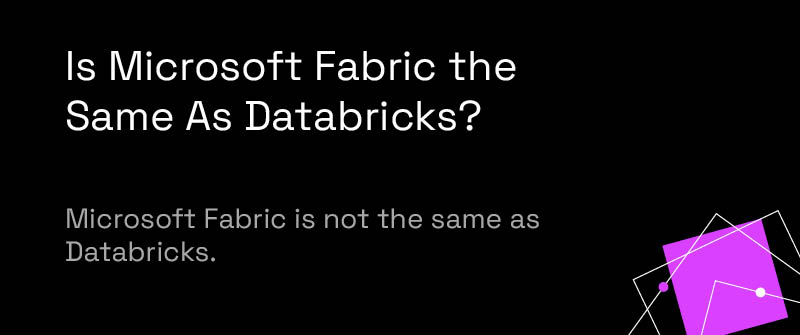
Businesses seeking to make informed data decisions must appreciate the distinctions between the various cloud computing and data analytics platforms available. When it comes to data science and data engineering, Databricks and Microsoft Fabric are two such platforms that have drawn a lot of interest. This post seeks to dispel popular misconceptions andf answer questions while offering a comprehensive grasp of the distinctions and similarities between these two platforms. Read on to learn more about Microsoft Fabric data analytics vs. Databricks.
Is Databricks Owned by Microsoft?
Contrary to some beliefs, Databricks is not owned by Microsoft. It is an independent entity but shares a close collaborative relationship with Microsoft. This partnership has facilitated the integration of Databricks with Microsoft’s Azure cloud computing services.

Is Databricks and Azure Databricks the Same?
Databricks and Microsoft have partnered to create Azure Databricks. This partnership blends Azure’s cloud infrastructure with the technological prowess of Databricks, forging an ideal setting for executing machine learning and analytics projects on Azure. While Azure Databricks is built on the same core technology as Databricks, it sets itself apart through its deep integration with Azure services, especially Azure SQL Data Warehouse and Azure Storage. This integration enhances its appeal to businesses already invested in the Azure ecosystem. In fact, as a first-party Azure service, Azure Databricks receives direct support from Microsoft as a fully managed solution
Is Databricks an Azure Resource?
Azure Databricks is indeed an Azure resource. It is offered as a data integration service on the Azure platform, allowing users to utilize Databricks’ capabilities within the Azure environment. This integration simplifies analytics workflows and boosts data processing efficiency.

What Is the Difference Between Microsoft Fabric and Azure?
Azure offers an extensive array of services like networking, databases, storage, and computing, crafted to equip businesses with the essential tools and platform for building, rolling out, and managing applications and services across Microsoft’s global data center network. However, Azure’s capabilities go way beyond data analytics. It’s a versatile platform that also delves into areas like virtual computing, artificial intelligence (AI), the Internet of Things (IoT), among many other advanced tech domains.
In contrast, Microsoft Fabric specializes in data analytics and business intelligence. It’s not a standalone product but part of Microsoft’s broader data analytics framework. Microsoft Fabric integrates various tools for efficient data management and analysis, complementing services like Power BI for advanced data visualization and intelligence. This makes it particularly valuable for businesses focused on complex data analytics.
Integration with Other Tools and Services
A crucial aspect of any data analytics platform is its ability to play well with other tools and services. Databricks offers extensive integration capabilities, particularly with a variety of data sources, ETL tools, and BI platforms, thanks to its API-first approach. This flexibility enables businesses to easily plug Databricks into their existing data pipelines, enhancing their analytics and machine learning workflows without significant overhauls.
Microsoft Fabric, being a part of the broader Azure ecosystem, excels in its seamless integration with other Microsoft services. Whether it’s pulling data from Azure Data Lake Storage, transforming data with Azure Data Factory, or visualizing insights with Power BI, Microsoft Fabric acts as the glue that binds these services together. This deep integration not only simplifies data workflows but also allows businesses to leverage their existing investments in Microsoft technologies to the fullest extent.
Is Microsoft Fabric the Same As Databricks?
Microsoft Fabric is not the same as Databricks. We’ve established that Microsoft Fabric is designed to provide an integrated suite of tools and services for data management and analysis. This platform enables businesses to extract actionable insights by facilitating the organization, storage, and processing of data. Its role is integral in the Microsoft ecosystem, particularly for users who are already leveraging other Microsoft services and are looking for a cohesive data analytics solution that aligns with their existing infrastructure.
Conversely, Databricks provides a specialized, unified data analytics platform for data engineering. Big data processing, machine learning, and collaborative data science are its main areas of interest. Businesses and working with enormous datasets and needing advanced analytics skills prefer Databricks because of its exceptional capacity to manage complicated analytics workflows and large-scale data processing. The platform makes it easier for engineers, analysts, and data scientists to work together productively, which accelerates the process of extracting insights from data.

Technical Specifications and Performance
When it comes to selecting the right data analytics platform, understanding the technical underpinnings and performance capabilities is paramount. Databricks shines with its optimized Apache Spark environment, allowing for rapid data processing and machine learning tasks across massive datasets. Its auto-scaling feature ensures that resource allocation matches workload demands efficiently, making it a powerhouse for heavy computational tasks.
On the other hand, Microsoft Fabric, integrated within the Azure ecosystem, leverages a variety of Azure services to provide a robust analytics platform. It supports a wide range of data analytics and processing activities, from real-time analytics with Azure Stream Analytics to big data processing with Azure HDInsight. Microsoft Fabric’s strength lies in its seamless integration with other Azure services, ensuring that businesses can leverage a comprehensive and cohesive infrastructure for their data analytics needs.
Is Microsoft Fabric the Same As Power BI?
Microsoft Fabric and Power BI, though both integral to the Microsoft ecosystem, serve distinctly different purposes. Microsoft Fabric is a comprehensive framework encompassing a wide range of data analytics services and tools, within which Power BI operates as a crucial component focused on data visualization and business intelligence. This relationship is not just sequential but synergistic.
By integrating with the broader functionalities of Microsoft Fabric, Power BI facilitates seamless data management, analysis, and visualization, thereby enabling businesses to harness the full potential of their data within a unified, powerful analytics ecosystem.
Find out more about the what are the advantages of Microsoft Fabric.
Community and Support
The strength of a platform’s community and the quality of its support services can greatly influence user satisfaction and success. Databricks boasts a vibrant community of data scientists, engineers, and analytics experts. Through forums, user groups, and a comprehensive documentation library, users can find answers to their questions, share best practices, and stay updated on the latest features and innovations. Additionally, Databricks offers professional support services, ensuring that businesses can tackle complex challenges with expert assistance.
Microsoft Fabric benefits from the extensive Microsoft and Azure communities, encompassing a wide range of professionals from developers to data analysts. The platform is supported by extensive documentation, tutorials, and Microsoft’s support infrastructure. Users can leverage forums such as MSDN and Stack Overflow, where Microsoft’s engineers and community experts frequently contribute, providing valuable insights and solutions. This rich ecosystem ensures that users of Microsoft Fabric have access to the resources and support needed to maximize their data analytics capabilities.
Transform Your Data Analytics Journey with P3 Adaptive
Traverse the complexities of Microsoft Fabric and Databricks with P3 Adaptive’s Fabric expertise. Our personalized guidance can elevate your data analytics strategy, data teams, and data engineers, ensuring your business harnesses the valuable insights and full potential of these powerful tools. Partner with us for a tailored approach that breaks down data silos and turns your data into actionable insights that drive growth.
Drop us a line for a swift and innovative path toward success.
Get in touch with a P3 team member